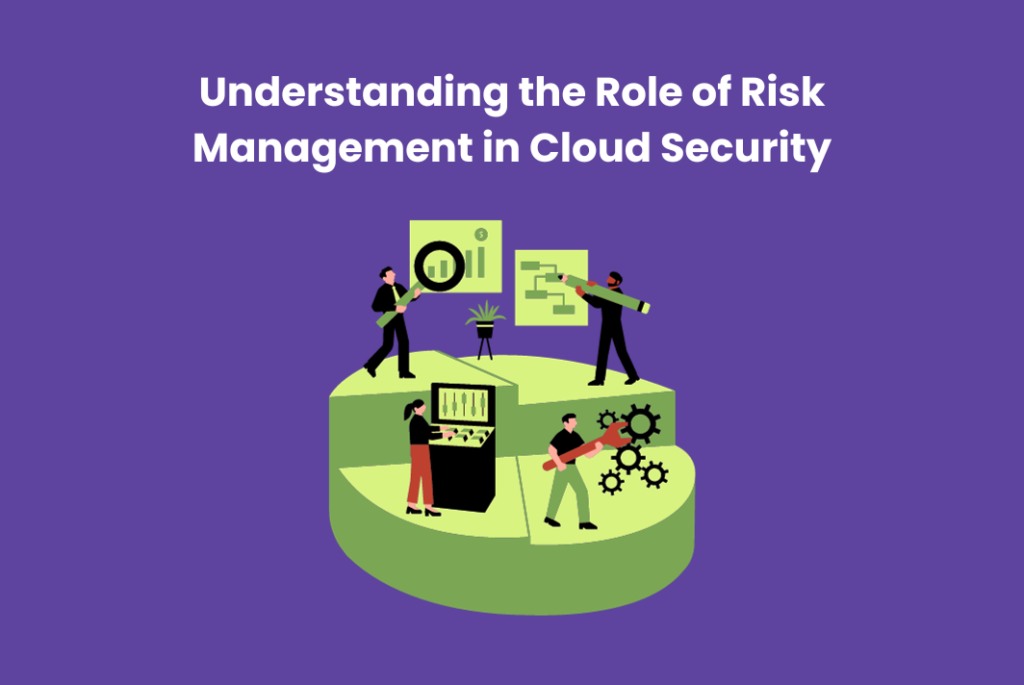Understanding the Role of Risk Management in Cloud Security
Data breaches and cyber threats are rampant, securing sensitive information stored in the cloud has become paramount today. Cloud computing has revolutionized the way businesses operate, offering unparalleled flexibility, scalability, and cost-effectiveness. However, with great power comes great responsibility, and that responsibility primarily falls on the shoulders of risk management in the cloud security domain. In this blog we’ll explore more about the significance of CCSP Certification and CCSP Domains.
Table of Contents
The Importance of Risk Management in Cloud Security

CCSP Certification has become a well-known and highly sought-after accreditation for professionals responsible for managing and safeguarding cloud infrastructures. To grasp the significance of this certification, you must first understand the function of risk management in cloud security.
The CCSP Domains
Before we get into the importance of risk management, let’s go over the CCSP domains. Certified Security Professionals (CCSPs) are required to be well-versed in the following six domains:
- Architectural Concepts and Design Requirements: This domain covers the fundamental architectural principles necessary for securing cloud environments.
- Cloud Data Security: It addresses the protection of data in the cloud, including encryption, tokenization, and more.
- Cloud Platform and Infrastructure Security: This domain deals with securing the physical and virtual cloud infrastructure and the platforms on which cloud services are built.
- Cloud Application Security: It focuses on the security of applications hosted in the cloud and their development and maintenance.
- Cloud Security Operations: This domain addresses security operations such as incident response, identity and access management, and security assessment and compliance.
- Legal, Risk, and Compliance: It covers the legal aspects of cloud security, risk management, and compliance.
The Role of Risk Management in Cloud Security
Risk management is one of the six areas included in the CCSP certification, emphasising its significance. But what exactly is risk management in security, and why is it so important?
Identifying Risks:
The first step in risk management in cloud is to identify possible threats and vulnerabilities unique to the environment. This entails evaluating the security environment, comprehending the kinds of data held, and identifying possible sources of failure.
Assessing effect:
Once risks have been identified, the next stage is to evaluate their possible effect on the organization. This involves assessing the effects of a security breach or data loss, such as financial losses, reputational harm, or legal ramifications.
Risk Mitigation:
Risk management specialists design ways to minimize risks after identifying them and assessing their effect. This might include putting in place security measures, encryption, access management, or third-party services.
Continuous Monitoring:
Cloud environments are dynamic, with data, applications, and infrastructure constantly changing. As a result, risk management in security is an ongoing process that needs constant monitoring in order to respond to new threats and vulnerabilities.
Compliance and Legal Considerations:
CCSP practitioners must be well-versed in cloud-related legal and regulatory obligations in the legal, risk, and compliance realms. Failure to comply with these might result in legal consequences as well as financial fines.
Business Continuity:
Cloud security risk management includes guaranteeing business continuity. This includes developing techniques to keep important operations functioning in the face of cloud-related interruptions.
Incident Response:
In the event of a security incident, risk management professionals play a crucial role in orchestrating an effective and efficient response. This may include determining the fundamental cause of the occurrence, confining it, and reducing its consequences.
The Intersection of Risk Management and CCSP Certification
Individuals possessing the Certified Cloud Security Professional (CCSP) credential have the knowledge and abilities required to flourish in the area of cloud security. CCSPs can successfully defend their organisation’s cloud assets, maintain compliance, and preserve sensitive data by mastering risk management. CCSPs are knowledgeable about the tools and strategies needed to detect, analyze, and manage risks in cloud settings.
Candidates must show expertise in a variety of fields, including risk management, to become a CCSP. Professionals that achieve this certification demonstrate their abilities to:
- Recognise and evaluate cloud-specific hazards.
- Put in place and maintain security controls.
- Ensure data security and compliance.
- Create a robust incident response strategy.
Conclusion
Risk management is critical in cloud security because it ensures the integrity and security of cloud environments. As cloud computing becomes more popular, the need for qualified workers, such as those with the CCSP certification, grows. The certification certifies an individual’s expertise while also demonstrating their dedication to sustaining the highest standards of cloud, including effective risk management. As organizations rely more on the cloud, risk management within the CCSP domains is more important than ever.







